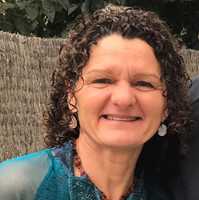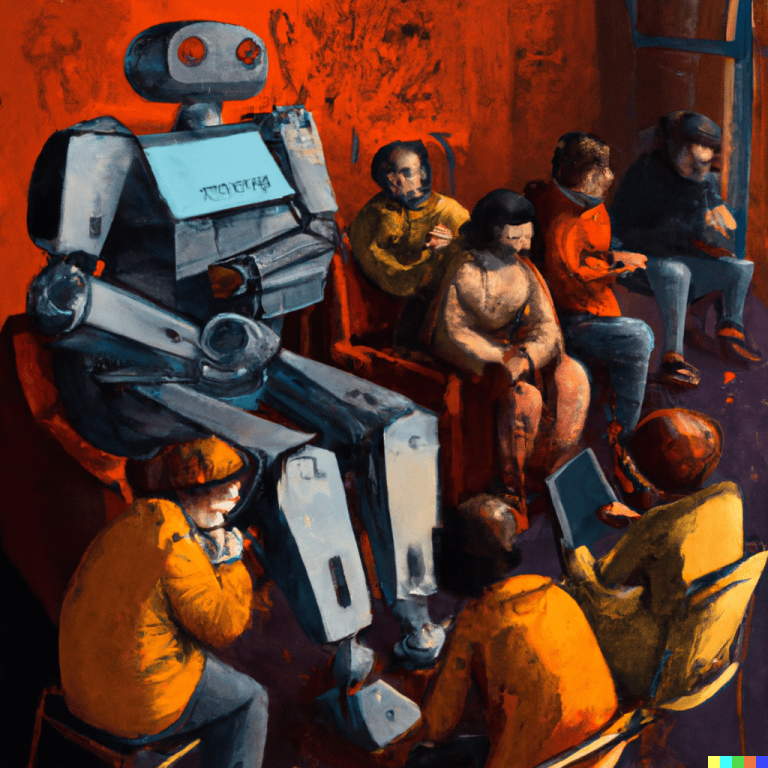Look at the camera, smile, and flash!: a debate to frame
17 September, 2021
What to some may seem very complicated, to others is very simple. We may find achieving a high level of student involvement and participation in debates to be relatively easy with a particularly interesting subject. Or we may find it extremely difficult with large classes.
We commonly use the communication spaces of the classrooms for a variety of purposes, and it is often the case that neither the use nor the space is as effective as we would like in achieving what we want or plan to happen in the classroom in a debate activity. What is certain is that we want the students to learn.
This is so much the case that debate, regardless of whether it forms part of a continuous assessment activity or is ongoing throughout the course, should be designed in the same way and with the same intensity and rigour as any other activity. We therefore need to focus our efforts properly and head in the right direction to lead debates, discussion forums and activities. If we are leading them, then it follows that we know where we are going and where we want to take the students.

Without proper focus, the perfect photo we planned for will be upside down or out of focus.
On 27 April 2021, I gave a webinar entitled How to design and assess online debate activities. I was commissioned to produce it by the Centre for Teaching Excellence (CEDU) of the Universidad del Norte (UNINORTE) for the university’s teaching staff in Barranquilla, Colombia.
In this webinar I explained how to design training activities based on debating one or more subjects. Preparing it with enough guarantees to make the subject accessible and interesting for the students, being clear from the start what could come up and how to direct the discussion, and deciding how to assess what the students have learnt from it are some of the elements of the design strategy shared with the Colombian teaching staff.
Focus, design and plan: the keys to success
In my opinion, there are five keys to the success of a debate-based activity:
1.- Precise wording
It is much easier to answer a question than to talk about a subject. When wording the title of the debate, if instead of saying “Let’s reflect on brand communication” we ask “What are the weaknesses of brand communication in providing the consumer with solutions?”, we help the students to focus the debate as a question to be answered and we decide that doing so will teach them to contribute solutions to a given problem.
If we ask “Does reinforced concrete have an advantage over steel in the construction of a two-storey building?”, we will get a yes-or-no answer. However, if we ask “What advantages does reinforced concrete have over steel in the construction of a two-storey building?”, we are affirming that it does have advantages and we are asking the students to tell us what they are.
Asking a direct question (or at the most two, provided they are closely related to each other) helps us start the debate off on a good footing.
Learning is learning to think. And we learn from things we already know. Therefore, one of the guidelines in terms of motivation is to focus the debate in terms the students can readily apprehend. And this brings us on to the next point.
2.- Give reasons
The webinar attendees were concerned about how to motivate students to actively participate in debates. Contrary to what is often assumed, grades are an incentive, but they are not necessarily the only reason why students participate.
Photo by Caleb Martin on Unsplash
Motivate means provide someone with a reason for doing something. Accordingly, our first efforts must be to ensure that the students are capable of running with the subject matter. If you asked me now to “assess the chances of the Perseverance rover landing on Mars again in 10 years’ time,” I would be at a loss to answer you. I have only read the headlines of the news stories published on this matter (I have no prior knowledge) and I don’t have any friends or acquaintances in my circle with the experience to enlighten me. Providing material to work on can help: “I don’t know a lot about climate change, but I do read things about Greta Thunberg, so maybe I have something to say.”
3.- Have something already pre-cooked
Anticipate what will come up and know what to do with what actually comes up. What role do we play as debate leaders? Should we always intervene? When should we and when shouldn’t we? When the group “drifts off topic”, starting discussions that have nothing to do with the subject, how do we get them back? And when only a third of the 80 students in the classroom are participating, what do we do?
If the need to make these decisions takes us by surprise in the middle of a debate, then we’ve gone wrong somewhere. It is better to be prepared and make teaching notes to help control what is happening. If we do this, we may have more energy and time to do what we want to do: encourage everyone to give grounded opinions, manage to include students who in principle have nothing to say, or highlight the most interesting contributions, among others.
4.- In assessment, less is more
If our course aims to have students learn by reflecting, evaluating, comparing their opinions with those of the group or making decisions regarding a specific situation, then debate is a suitable activity.
It is also suitable when the subject or question to be debated can be interpreted in different ways, has various solutions or can be tackled from different perspectives. Back-and-forth discussions make it possible to see the wealth of nuances that each participant can offer. We could, for example, generate a debate to jointly assess the most significant socioeconomic repercussions of fake news disseminated about COVID-19 in the media during the pandemic.
Photo by Shane Young on Unsplash
If we look closely, we may find there are many things that can be worked on – and assessed – in a debate. Let’s narrow things down a bit: one or two learning outcomes at the most, and three or four shared, specific and clear assessment criteria.
Things are even more complicated with very large classes. It is not easy to manage a debate and harder still to monitor one, provide educational feedback and assign a grade to each one of the 70 students in the class.
One option I shared with the webinar attendees to make life easier in terms of both management and ensuring student participation is generating two debates in the course. They should share a common theme, but be worded differently. Plan them to take place sequentially in the schedule, leaving a few days or weeks between them. The students are required to choose in which one they will participate. This reduces the number of participants in the debate and spaces out our work.
5.- Make good use of it for effective learning
Whether we are teaching in a fully digital or hybrid environment or we are incorporating technology into an in-person classroom, we can use debate forums for a variety of different educational purposes. It should be said that at many institutions, the communicative space for forums and debates is the same. They do not have two separate spaces, like we do.
I created this table with these institutions in mind. Pay attention to the decision-making about one or other use of the communicative space in accordance with certain recommendations. Not everything is valid or the most effective option. Here I highlight seven intentions from all those that are possible.
Intention | Suitability of the space to the intention | Questions to ask and recommendations | |
1 | To kick off the debate or break the ice | Go ahead! but… | What shall we do with what comes up? How do we close it? Recommendations: . We do not grade what they learn in this . We do not reward their participation |
2 | To activate prior knowledge | Go ahead! but… | What shall we do with what comes up? How do we close it? Recommendations: For diagnostic assessments, it is better to use a form or survey tool. |
3 | To introduce yourself to the classroom group | Go ahead! but… | If we use it to get to know the students and have them get to know each other, what about those who don’t say anything? Recommendations: . Pose a question related to the content of the continuous assessment activity or course and ask them to answer it. At the start of the webinar, nobody said anything. I asked this question: “What is the easiest thing in online debates and what is the most complicated?” That got everyone talking. |
4 | As a coffee break space | Go ahead! | . We do not grade what they learn in this . We will not reward their participation |
5 | As a directed discussion forum | Go ahead! | This intention is the most prevalent and the one most used at many institutions, including ours. Recommendations: . Use the debate space to discuss, assess pros and cons, reflect as a group . It will be necessary to participate and we will assess what they learn |
6 | To clear up doubts | Go ahead! | Recommendations: . We do not grade what they learn in this . We do not reward their participation . We observe “how they operate” and we help them if at some point the group is not capable of clearing up a specific doubt. It should be said that often students are not aware that they have doubts or have made mistakes and, therefore, do not share it. It is worth paying attention to detect subsequent problems. |
7 | As a laboratory | Go ahead! | We do this in the forums of the Faculty of Computer Science, Multimedia and Telecommunications (EIMT). The students share results of exercises and ask for help from their classmates. The teacher supervises. Recommendations: . . We do not reward their participation |
Resource published on the eLCKit [accessible for UOC users]
Reference resources:
- The references throughout the presentation to “Learning is learning to think” are from this very interesting book:
Ruiz Martín, Héctor (2020) ¿Cómo aprendemos? Una aproximación científica al aprendizaje y la enseñanza. Editorial Graó, Barcelona, Spain. ISBN 9788418058059
- The tools for sharing opinions mentioned on slide 13 appear in a post on the UOC eLearn Center blog:
Prácticas docentes y habilidades digitales durante el confinamiento
- The debate rules from slide 21 are provided in this infographic produced by members of the UOC:
Guàrdia, L.; Maina, M.; Morales, G. (2018) Normas y consejos para los debates virtuales
- On the promotion of student participation and commitment, the “keep it friendly” reference on slide 24 is adapted from a webinar and presentation by Dianne Conrad, from the Centre for Distance Education of Athabasca University, given last year at Contact North, Canada: How to Engage Online Learners in Authentic Assessment
- The reference to students’ mistakes and doubts, of which they are not always aware is from the webinar “No hay nada más inútil que una pregunta mal planteada: ¿cómo plantear buenas preguntas?”, offered by Mònica Vilasau within the cycle of emergency remote teaching webinars at the start of the pandemic in March 2020.
https://www.youtube.com/watch?v=h2rGneUD-NQ
- This guide, which we published as a result of what we learnt teaching course instructors to design and encourage debate at the UOC:
Girona, C. ; Martínez-Aceituno, JA; Mas, X. (2006). El debat virtual a la UOC. http://openaccess.uoc.edu/webapps/o2/handle/10609/57604
It is a guide to design, encourage and assess virtual debate activity. Step by step you will find actions, guidelines, examples and good practices to get the most of classroom debates at the UOC as a learning activity.








